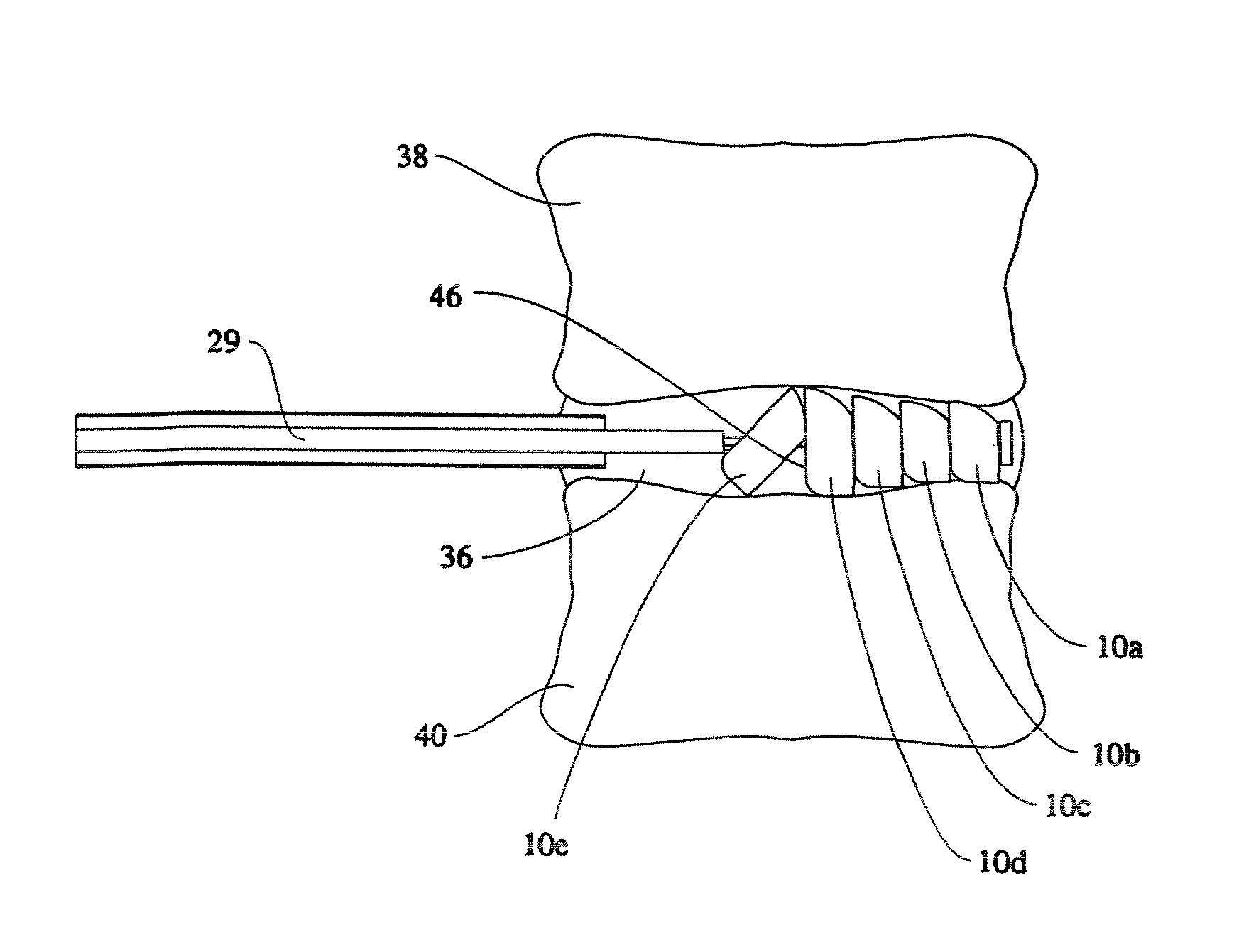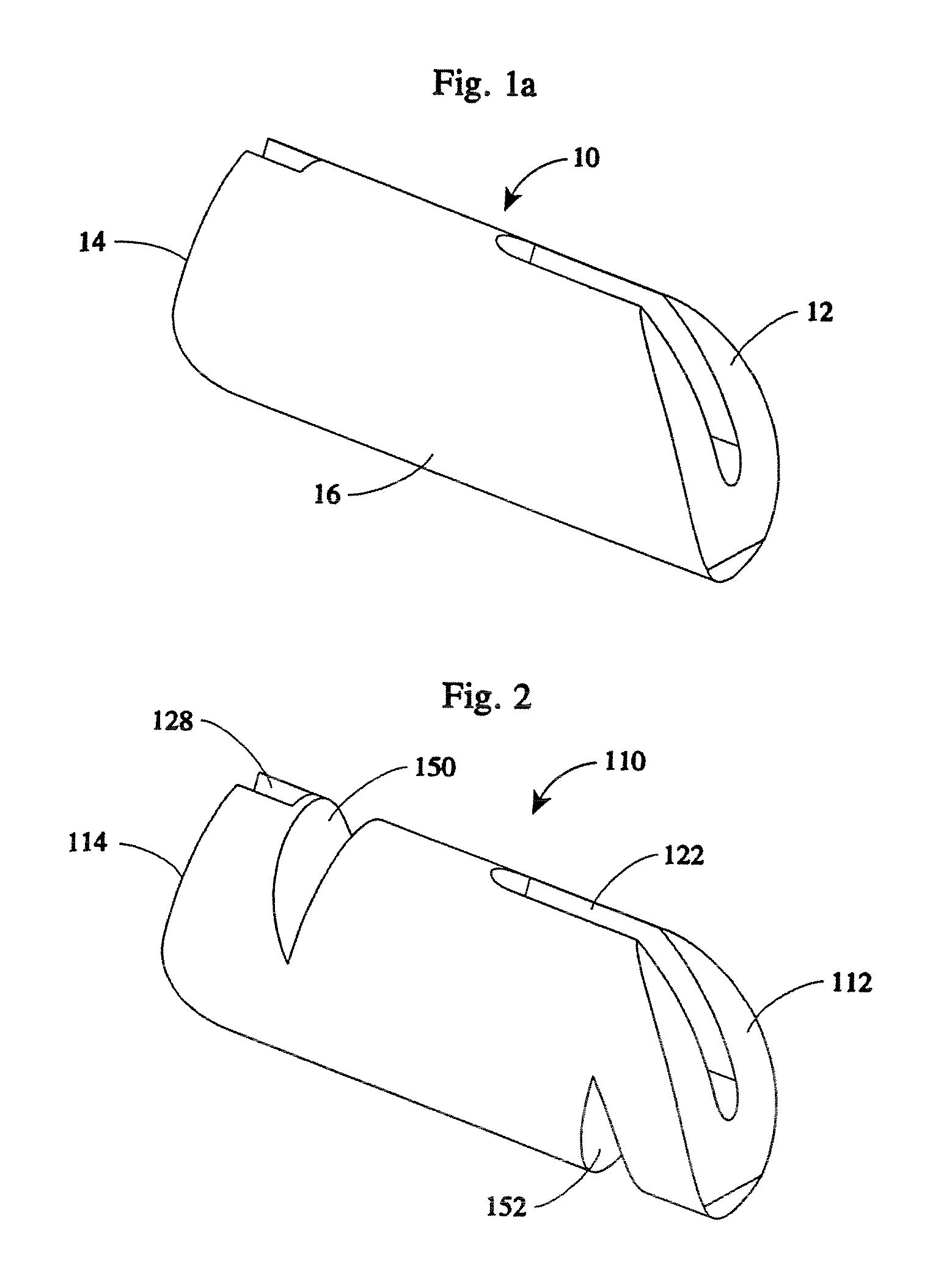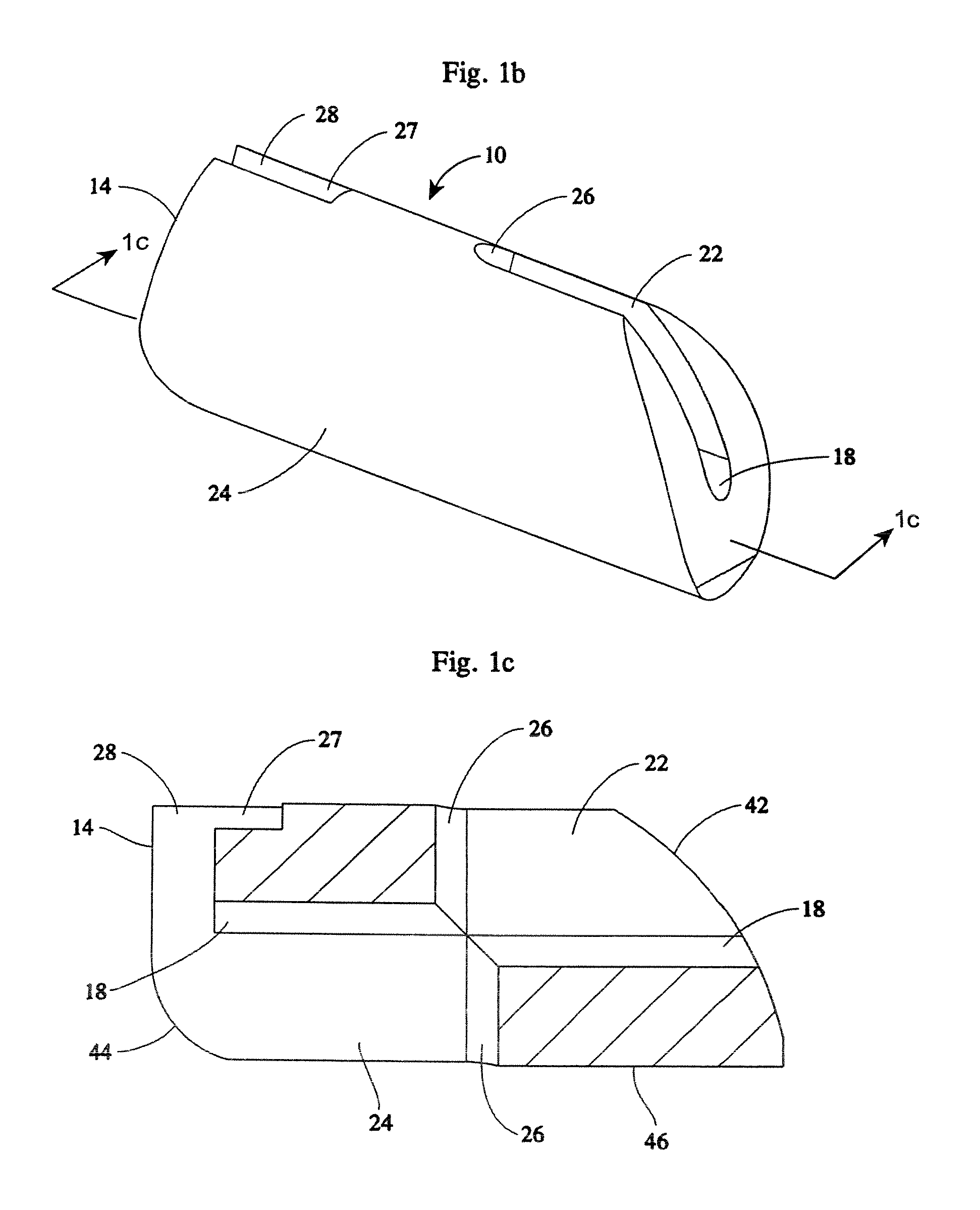Linked slideable and interlockable rotatable components
a rotatable component and interlocking technology, applied in the field of linked slideable and interlockable rotatable components, can solve the problems of increased trauma, longer healing time, and higher risk of complications, and achieve the effects of reducing the potential for slippage or other instability of the delivered device, facilitating the ability of the device, and reducing the potential for slippage or other instability
- Summary
- Abstract
- Description
- Claims
- Application Information
AI Technical Summary
Benefits of technology
Problems solved by technology
Method used
Image
Examples
Embodiment Construction
[0065]An implant system of the present disclosure includes a plurality of rotatable segments 10 of a first embodiment, as shown in FIGS. 1a-b, 4b-k, and 10. Each rotatable segment 10 has a leading or distal end 12, a trailing or proximal end 14, and a main body 16. A first hollow bore 18 extends the length of the rotatable segment 10, i.e. the hollow bore 18 extends from the leading or distal end 12, through to the trailing or proximal end 14.
[0066]The first hollow bore 18 is sized to accommodate a component guide 20 such that the rotatable segment 10 may be advanced along the component guide 20. For reasons explained below, the rotatable segment 10 also includes a first slotted opening 22 and a second slotted opening 24. The first and second slotted openings 22, 24 are contiguous with the hollow bore 18. The first slotted opening 22 extends between the distal end 12 and a second hollow bore 26. The second hollow bore 26 extends the horizontal height (i.e., the height when in the ho...
PUM
| Property | Measurement | Unit |
|---|---|---|
| height | aaaaa | aaaaa |
| height | aaaaa | aaaaa |
| length | aaaaa | aaaaa |
Abstract
Description
Claims
Application Information
 Login to View More
Login to View More - R&D
- Intellectual Property
- Life Sciences
- Materials
- Tech Scout
- Unparalleled Data Quality
- Higher Quality Content
- 60% Fewer Hallucinations
Browse by: Latest US Patents, China's latest patents, Technical Efficacy Thesaurus, Application Domain, Technology Topic, Popular Technical Reports.
© 2025 PatSnap. All rights reserved.Legal|Privacy policy|Modern Slavery Act Transparency Statement|Sitemap|About US| Contact US: help@patsnap.com



